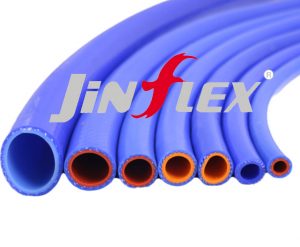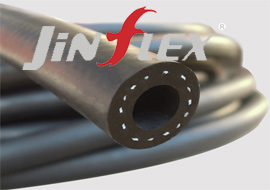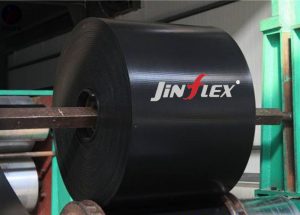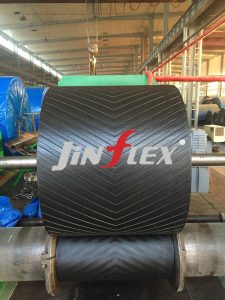The inner rubber layer of the hose is extruded from the first hose, and then enters the water tank, where the inner layer of extruded hose is cooled, and then enters the knitted layer. The knitted layer is interwoven on the inner tube embryo along the direction at a certain angle with the tube axis. Then enter the second extruder. The second extruder uses a T-shaped die head. There is a vacuum device at the die head to strengthen the bonding of the inner and outer rubber layers and improve the integrity of the rubber layer. Then enter The water tank cools the outer extruded hose. A compressed air drying device is installed at the end of the water tank to dry the cooling hose. The hose enters the fixed-length cutting machine and is cut according to the specified length requirements.

Next, the cut hose will be sent to the quality inspection area for strict quality inspection. Our professional quality inspectors will use advanced testing instruments to test key indicators such as the thickness of the inner and outer rubber layers, the density of the knitted layer, and the degree of adhesion of the hoses one by one to ensure that each hose meets our high standard quality requirements.
The hoses that pass the quality inspection will be sent to the packaging area. Here, we use environmentally friendly packaging materials to properly package the hoses to prevent damage during transportation and storage. At the same time, we will also clearly mark product specifications, production date, production batch and other information on the packaging to facilitate customer inquiry and traceability.

Finally, the packaged hoses will be sent to customers across the country through our logistics network. We have a complete logistics system to ensure that the hoses are delivered to customers in the shortest possible time to meet their production needs.


